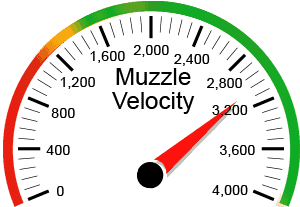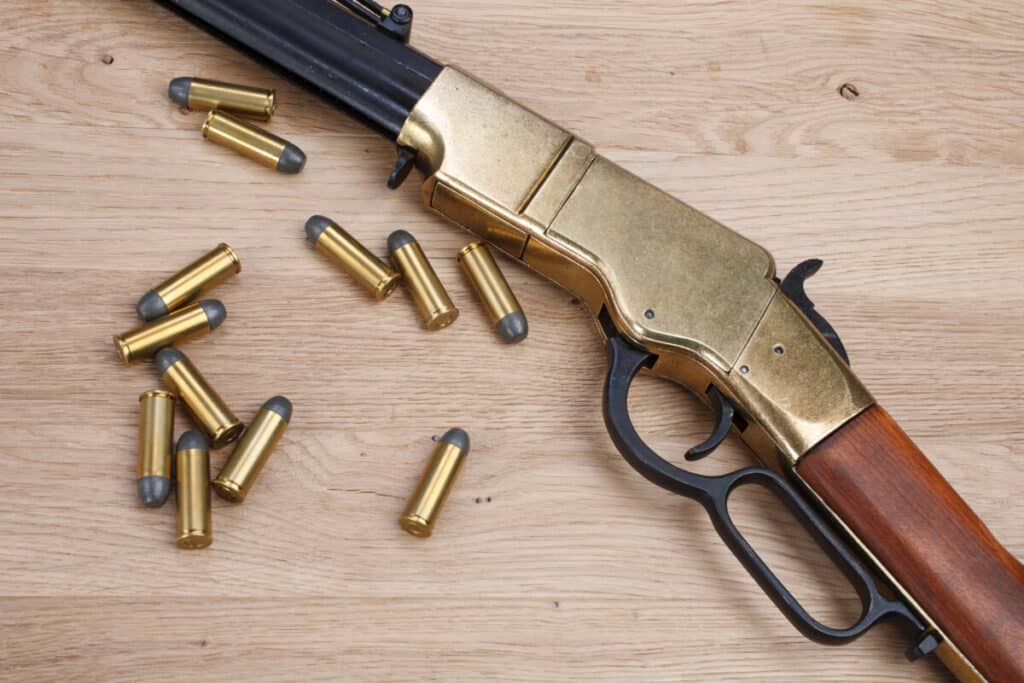Why Do Rifles Have Long Barrels?

Firearms come in a variety of types, sizes, and shapes. In general every firearm is designed with a purpose. Today we will look at rifles and why rifles have long barrels.
While there is no standard length of barrel that makes a firearm a rifle, rifles almost always have a barrel of extended length. The reason rifles have longer barrels is to increase the bullet velocity, and to a lesser extent it can improve accuracy to some extent.
Velocity and accuracy is a pretty simple answer, so lets dive in and discuss how barrel length affects both the velocity and accuracy of a rifle. When we say velocity, we are talking about the velocity of a bullet travelling down the barrel of rifle. When we talk about accuracy with rifles we are referring to how consistent the rifle can send a projectile to the same target location. For the our purposes we will use accuracy in a broad manner, as the definition of accuracy in terms of ballistics and firearms is often very nuanced.
Velocity
One of the defining characteristics of rifle, versus a pistol is the length of the barrel. So how does this affect velocity? Velocity in a firearm is a function of the ignited propellent producing gasses that move a bullet down the barrel of a firearm. Generally speaking the more time the propellent has to burn and produce gasses before the bullet exits the barrel the more velocity can be imparted on the projectile. As such, the longer the barrel the more time there is for the gasses to act upon the projectile speeding it up as it moves down the barrel.
The increased length of the barrel, in most cases has a direct relationship to the velocity of bullet when it exits the barrel. Take for instance a .357 Magnum cartridge. This caliber can be fired from firearms designed as a pistol with a barrel generally between two and eight inches or from rifles with barrels around 16″. In an eight inch pistol barrel a 125 grain bullet will exit the muzzle of the gun with a velocity around 1500 feet per second. The same load fired from a lever action rifle with a 16″ barrel will exit the barrel at 2000 feet per second. Both projectiles use the same case, powder charge, and bullet weight. The major difference between these examples is the barrel length. (This information is based on reloading data from the Hornady Handbook of Cartridge Reloading 8th edition.)
So from this example we can see that the barrel length has a direct correlation with bullet velocity. Now it is important to understand that there is a limit to the length a barrel can be. So like we learn in economics there is a rate of diminishing returns. A barrel of excessive length will actually begin to produce lower velocities than a barrel that is shorter. As a result most manufacturers of hunting rifles use two standard lengths of barrels. 22″ and 24″ are the most common lengths found on modern centerfire hunting rifles. Modern sporting rifles will often come with barrels ranging from 16″ to 20″. Of course there is some variance to this, but generally these are the lengths you will find for traditional and modern sporting rifles intended for hunting and target shooting.
So why is velocity important? With respect to hunting more velocity means the bullet is carrying more energy. Enough energy is important for quick and ethical kills on game animals. It also means that the bullet will reach its target faster. Reaching the target faster reduces the chance the intended target could move before the bullet reaches its destination, and the faster the bullet moves the less “drop” the bullet will have on its way to the target, which means the shooter doesn’t have to correct or “hold over” as much to hit their intended target. Overall, the longer barrel increases velocity which leads to better ballistics than a short barrel.

Accuracy (“Shoot-ability”)
Why a rifle has a long barrel when it comes to accuracy is actually more nuanced than why the barrel is long in regards to velocity. While velocity has its role in the accuracy of a firearm, the long barrel of a rifle does offer several advantages to the accuracy of a shooter. Like velocity, however, there are diminishing returns when it comes to the length of the barrel, which again is why some many rifles have barrel lengths that are so similar.
From a materials and physics standpoint, a shorter barrel is potentially more accurate, as the shorter the barrel the more stiff or rigid the barrel is, which is important to accuracy. Barrel length however, has less to do with the ability of the barrel itself to be accurate and more to do with how it impacts the shooters behavior on accuracy. Again why we see so many hunting rifles with barrels around 22″-24″ is that happens to be a sweet spot of both velocity and handling or “shoot-ability” for lack of a better word.
However, the length while also suffering from diminishing returns, can in fact improve accuracy by way of how the gun handles and its ability to help a shooter compensate for poor input variables, like trigger control etc. This benefit works in two ways. First, for rifles using iron sights, the longer barrel lengthens the sight radius which helps improve the shooters accuracy by way of an improved and more precise sight picture. Second, the longer length of the barrel reduces, but does not eliminate, the deviations from the target by requiring more force to move the barrel from the point of aim, most specifically when shooting from a stable surface or mount.

To illustrate my point let me give an example from my own experience. When I go out to do some target practice I almost always have a steel target at 100 yards. Generally speaking that target is an eight inch round steel plate. At some point during the practice, I will try and hit that 100 yard target using a pistol or revolver, with the barrels ranging from three to six inches. On occasion I will hit the plate, but doing so is difficult. The short sight radius of the pistol, the large site size compared to the target size and the steady trigger pull required to hit the target is immense. The slightest deviation from the target while pulling the trigger will cause me to miss.
On the other hand, when using a lever action rifle, hitting the target is much easier, even with just Iron sights. The long sight radius allows me to see the target behind the iron sights, the increase velocity reduces the hold over required, meaning I can aim straight at the target, and because the sights are more precise I notice my deviations during aiming and firing, and my subtle movements are less pronounced at the muzzle of the rifle compared to the pistol.
Well I hope that provides a little bit understanding on why rifles have long barrels. This covers just the basics, there are hours worth of ideas that could be discussed regarding barrel length. Be sure to comment and check back often for more articles, until then happy trails.
